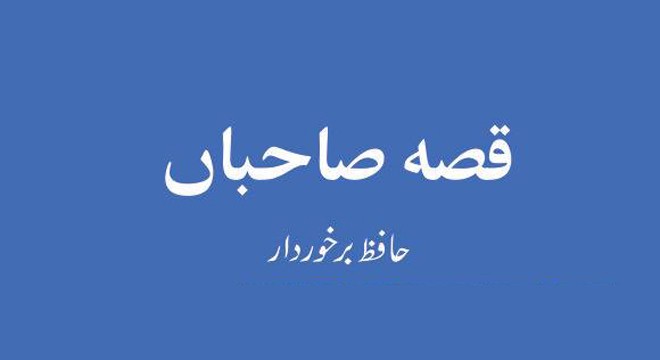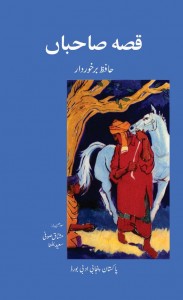The Punjabi Adabi Board has published an edited version of Qissa SahibaaN which is exceptional in detail and content, and raises some basic questions about editing and editorial responsibilities

Qissa SahibaaN, famously known as Qissa Mirza SahibaaN, is one of the most misunderstood epics. On one hand, some have dismissed it for the masculine nature of the tale and its nomenclature where the male naming takes precedence over female as compared to other famous qissas like Heer Ranjha, Sohni Mahinwal, Sassi Punnu, ShiriN Farhad. They do so without reading the poets who have repeatedly called it SahibaaN’s Qissa and without analysing how and when Qissa SahibaaN became qissa Mirza SahibaaN.
On the other hand, the Marxist critics insist that it’s an elitist tale because both Mirza and SahibaaN belonged to the upper classes of the society and this whole affair was a feudal class tribal feud and their love an impure and compromised engagement.
The first known poet to compose this tale in verse was Peelo of Dhan-Khushab area. The only published text of Peelo is the one collected by Richard Carnac Temple (1850-1931) that appeared in the 3rd Volume of his legendary Legends of Panjab (Bombay;1886). He provided the original text in roman alongside its English translation. Dr Faqir Muhammad Faqir transliterated that roman text into Punjabi Persian script with the help of Dr Baqir and published it in late 1960s. Temple himself admitted in his introduction that his collected qissa is “characteristically incomplete”. He recorded it from the Jatts of Jalandhur district who used to sing it in their gatherings.
That was the magic of our undivided Punjab that an epic written in Dhan-Khushab region by an unknown poet could seamlessly travel to all corners of the country with its amazing oral flow and cultural oneness with no religious borders. Since then, verses like these have become Peelo’s poetic trademarks: “DassaN maheNaaN da ghio ditta bakki day didh paa/Mairi Bakki tu darran farishtay, maithu darray Khuda (Bakki (Mirza’s mare) eats-up the butter of ten buffaloes/the angels fear Bakki and God fears me).”
However, it was Hafiz Barkhurdar Ranjha of Sargodha whose rendering of the qissa popularised the epic in the real sense of its literary excellence. A poet of Karana Bar compiling a tale of Sandal Bar made it a legend as modern and fresh as Waris Shah’s Heer. Ironically there were more than one Punjabi poets named Hafiz Barkhurdar and they all happened to be contemporaries. However, thanks to the opening canto of the Qissa that confirms who the reverend author of this epic is: Daftar waachay dard day Rãnjhay Barkhurdar/ Qissay karda AashiqaaN gal rahay sansaar.
In Pakistani Punjab, there has never been any editorial skill set among Punjabi scholars who were capable of editing our classics (Asif Khan and Sharif Sabir did commendable work but that is also too little too late). Faqir Muhammad Faqir is our main guard post partition as he made most of the Punjabi classics available in print. However, he was not competent enough to edit any of these books and he never claimed so either. He did a great job of reproducing these classics from hand written and other available manuscripts and, if he hadn’t done that, very little would have been available to later generations for any reference.

Hafiz Barkhurdar’s epic was published by Dr Faqir in 1965 that was full of errors and typos especially those of its poetic meter. Then it took another forty eight years for someone to put in the much-needed hard work to produce the first credible edited version of the Qissa. It was published by Suchet Kitab Ghar in 2013 where editing credits are given to Sangat. It is the same Sangat whose sessions are held at Najm Hosain Syed’s house at Jail Road, Lahore since 1972 where writers like Nadir Ali, Zubair Ahmad and Maqsood Saqib are a few of the regular attendees among others.
This Sangat-edited version paved way for Mushtaq Soofi and Saeed Bhutta to come forward and produce their masterpiece that was published by Punjabi Adabi Board (referred as Board) earlier this year. Hafiz Barkhurdar is lucky to have finally found so many exceptional people who dedicated their immense talent and time in each word of his poetic legend. An extremely difficult task that should have been taken by public-funded institutions is being left to a few selfless individuals. Blessed is the ever ignored land of the Punjab that has always found those few to take care of its treasures.
Dr Faqir’s print is the common denominator among Sangat and Board’s edited versions. However, Soofi and Bhutta state in their book that they have also consulted three older versions of the epic published by the famous Kashmiri Bazar publishers of Lahore. One version is that of Malik Sirajuddin and other is by Malik Muhammad Din and sons. The third one is published by Matba Sultani, Lahore with the publication date of 1879.
Board’s Qissa SahibaaN is exceptional in detail and content. It has enriched the whole Punjabi literary scene by raising some very basic questions about editing and editorial responsibilities. It insists that Classics are the foundation stone of any literary heritage so no text should be rejected or changed without providing an authentic reference and solid reasoning. In a literary formation like ours that is based on oral traditions, editing becomes more challenging and demands for any change ought to be fully substantiated and justified.
Sangat writers don’t provide any primary sources they have relied upon while editing Barkhurdar except the sole mention of Dr Faqir’s print. Neither do they explain their editorial methodology. They do, however, give an opening disclaimer that editing of Punjabi classics is an ongoing process and all work done so far including this one is basically incomplete. They also suggest that young scholars should come forward to do the job.
So Bhutta and Soofi have come forward and produced their edited version that carries a forty page long preamble of findings, comparisons and editorial methodology, detailing verse by verse and word by word listings. They have identified five major flaws in Sangat’s edited version:
i) Sangat’s only reference is Dr Faqir’s version of the Qissa and they haven’t consulted Kashmiri Bazar editions at all that weakens the editorial authenticity.
ii) Although Dr Faqir’s version is Sangat’s primary and only source, in spite of that they did not try to stay closer to its text. Rather wherever they failed to comprehend any words or lines, they have changed the text altogether without providing any reasoning.
iii) Sangat has forcibly changed the grammar and verbs originally used by Hafiz Barkhurdar in previous prints to suit their preferred lehndi/western dialect, especially verbs related to future tense like ‘awaaN gay’ is changed to awsan , ‘lahwaaN gay’ is replaced with lahwsan and so on.
iv) Sangat has failed to provide the correct meanings of many words that belong to the bar’s native idiom and expression. Board version cites nineteen such instances. One of such words is Sana’h. Barkhurdar has used it at couple of places. It’s a word that means saneha or message but Sangat has translated it as zirra baktar (armour).
v) Sangat has removed four cantos (191 to 194) from Dr Faqir’s version without providing any reasons or references for removal.
This doesn’t mean that Board editors have altogether rejected Sangat’s efforts. They have openly appreciated their commendable effort in correcting poetic meter of the text and providing meanings of difficult words that sets the base of a smooth reading experience and makes further research possible. However, it will be interesting to see how Sangat responds to the above listed arguments.
Whatever that response may be, these two edited collections have brought back our classics into the scholastic mainstream that should be cherished and celebrated. In Hafiz Barkhurdar’s own words: Bhar katora dudh da, neeviN ho turri/ Sukki vall qadeem di, keeti phir harri.
![]()
![]()
![]()
![]()